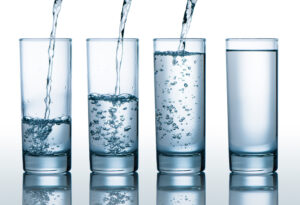Minerals Found in Your Drinking Water
 The water you use in your home or business commonly contains a range of minerals. The types and amounts of these minerals (measured in parts per million, or ppm) determine the “hardness” of your water supply.
The water you use in your home or business commonly contains a range of minerals. The types and amounts of these minerals (measured in parts per million, or ppm) determine the “hardness” of your water supply.
When measuring the hardness of a water supply, calcium carbonate (also called lime) is the most common single mineral tested. Lime-scaling is the white, chalky substance usually found lining tap water pipes. Another mineral found in freshwater is iron. It readily leaches from the ground into water supplies or is washed into the ground from iron and iron-alloy structures. When your water leaves red or brown stains on your laundry, iron in the water is often the cause. Sodium is a readily soluble mineral that will leach into ground water or wash into surface water supplies. It’s more active than iron and may be more difficult to remove in regular water treatments.
Other common minerals found in water sources include magnesium, copper, manganese, and lead. The Safe Drinking Water Act mandates testing for levels of copper and lead, with specific treatment requirements and increased testing if levels approach defined thresholds. Should uncommon minerals (such as boron, arsenic, and phosphorous) be detected, additional testing is required as well as monitoring.
Most tap-water treatment processes concentrate on delivering safe, decontaminated water. Removal of waterborne pathogens and filtration for taste and clarity are generally accomplished by disinfection-sedimentation-filtration systems. In hard-water areas, consumers have a variety of water-softening systems available to reduce the mineral levels further. Superior Water’s WATERBOY system can help you with your water-treatment needs.


![3670104[1]](https://superiorwater.com/wp-content/uploads/2021/03/36701041-150x150.png)
![WQA[1]](https://superiorwater.com/wp-content/uploads/2021/03/WQA1.png)
![bbb-accredited-business-symbol-png-logo-17[1]](https://superiorwater.com/wp-content/uploads/2021/03/bbb-accredited-business-symbol-png-logo-171.png)
![800px-Flag_of_the_United_States[1]](https://superiorwater.com/wp-content/uploads/2021/03/800px-Flag_of_the_United_States1.png)